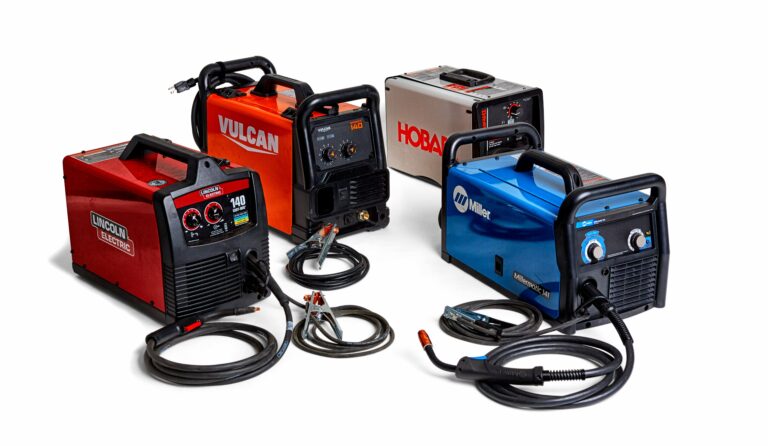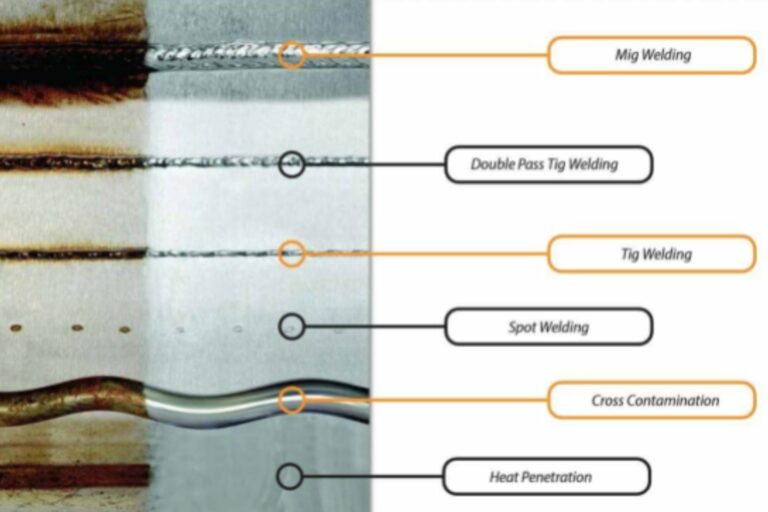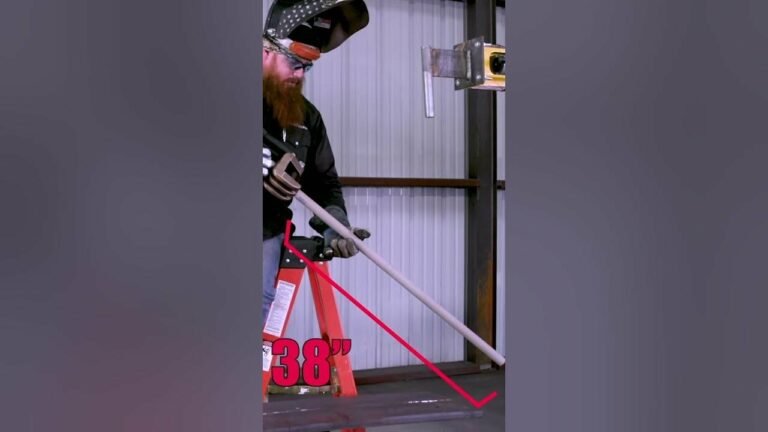Efficient Welding Machine Troubleshooting Pdf: A Comprehensive Guide
Having trouble with your welding machine? Look no further! In this article, we’re going to provide you with the ultimate solution: the welding machine troubleshooting pdf. Whether you’re a seasoned professional or just starting out, this comprehensive guide will walk you through all the common issues and their quick-fix solutions, ensuring you’re back to welding in no time. No more wasting time searching through countless forums or calling for expensive repairs – with the welding machine troubleshooting pdf, all the information you need is just a click away. Let’s dive in and get your welding machine back up and running smoothly!
Welding Machine Troubleshooting PDF
Welding machines are essential tools for any welding professional or enthusiast. However, like any electrical equipment, they can sometimes encounter issues or malfunction. Troubleshooting welding machine problems can be a challenging task, especially if you don’t have the necessary knowledge or resources. That’s where a welding machine troubleshooting PDF can come in handy. This comprehensive guide provides step-by-step instructions, tips, and solutions for common problems encountered with welding machines. In this article, we will delve into the details of welding machine troubleshooting PDFs, covering various topics such as common issues, troubleshooting techniques, and important safety considerations.
Understanding the Basics of Welding Machine Troubleshooting
1. Power Supply Issues
When troubleshooting welding machine problems, it’s crucial to start with the basics. One common issue can be related to power supply problems. Here are some potential power-related problems and their solutions:
1.1. Insufficient Power Supply
If your welding machine is not receiving enough power, it may not perform optimally or may not work at all. Some signs of insufficient power include weak or erratic arcs, low voltage readings, or failure to start. To troubleshoot this issue:
– Check the power source: Ensure that the power supply is connected correctly and that there are no loose connections or damaged cables.
– Verify voltage levels: Use a multimeter to measure the voltage at the power outlet. If it’s significantly lower than recommended, you may need to contact an electrician to fix the electrical supply issue.
1.2. Circuit Overload
Another common power-related problem is a circuit overload, which can cause your welding machine to trip the circuit breaker or blow a fuse. Here’s how to address this issue:
– Disconnect unnecessary equipment: If you’re using multiple electrical devices, consider disconnecting any non-essential equipment to reduce the load on the circuit.
– Spread the load: If possible, distribute the power demand across different circuits to avoid overloading a single circuit.
1.3. Generator Compatibility
If you’re using a generator as a power source for your welding machine, compatibility issues may arise. Some generators may not provide stable or adequate power for welding machines. To troubleshoot this problem:
– Check the generator’s specifications: Ensure that the generator you’re using is rated for welding machine applications.
– Use a power conditioner: If the generator’s power output is unstable, consider using a power conditioner or voltage regulator to stabilize the power before it reaches the welding machine.
2. Welding Machine Performance Issues
In addition to power supply-related problems, welding machines can also experience performance issues that affect the quality of the welds. Let’s explore some common performance-related problems and their troubleshooting techniques:
2.1. Inconsistent Arc or Unstable Welding
When welding, an inconsistent arc or unstable welding can lead to poor weld quality. If you’re experiencing these issues, consider the following troubleshooting steps:
– Check the ground connection: Ensure that the work clamp is securely attached to clean metal, providing a good electrical connection.
– Examine the welding cables: Inspect the welding cables for any visible damage or loose connections. If necessary, replace or repair the cables.
– Adjust welding parameters: Review your welding technique and adjust parameters such as voltage, amperage, and wire speed to achieve optimal settings for the specific welding task.
2.2. Excessive Spatter
Excessive spatter, which refers to the scattering of molten metal particles during welding, can be a frustrating issue. Here are some troubleshooting steps to combat excessive spatter:
– Clean the workpiece: Ensure that the workpiece is free from dirt, grease, or any other contaminants that could contribute to spatter.
– Adjust the wire feed speed: If the wire feed speed is too high, it can result in increased spatter. Adjust the settings to find the optimal wire feed speed for your specific welding process.
– Use anti-spatter solutions: Applying anti-spatter solutions or using anti-spatter sprays on the workpiece, welding gun, or welding nozzle can help prevent spatter buildup.
3. Safety Considerations for Welding Machine Troubleshooting
When troubleshooting welding machine problems, it’s vital to prioritize safety. Here are some essential safety considerations to keep in mind:
3.1. Disconnect Power
Before inspecting or troubleshooting any part of the welding machine, always disconnect the power supply and ensure the machine is turned off. This precaution minimizes the risk of electric shock or accidental startup.
3.2. Personal Protective Equipment (PPE)
Wear appropriate personal protective equipment, including welding gloves, safety glasses, and flame-resistant clothing, when troubleshooting welding machine issues. This safeguards you from potential hazards such as electric arcs, sparks, or hot metal.
3.3. Follow Manufacturer’s Guidelines
Refer to the welding machine manufacturer’s guidelines and user manual for specific troubleshooting instructions and safety precautions. Manufacturers provide valuable information tailored to their specific machines, ensuring accurate troubleshooting and safe practices.
Troubleshooting welding machine problems can be a complex process, but with the help of a welding machine troubleshooting PDF, it becomes more manageable. By understanding the basics of power supply issues, addressing welding machine performance problems, and prioritizing safety considerations, you can effectively troubleshoot and resolve common welding machine-related issues. Remember to consult the manufacturer’s guidelines and take necessary precautions to ensure a safe and successful troubleshooting process. With the right knowledge and resources, you can keep your welding machine running smoothly and achieve optimal welding results.
Frequently Asked Questions
Why is my welding machine not starting?
There could be several reasons why your welding machine is not starting. First, check if it is properly plugged in and the power switch is turned on. Ensure that the power source has sufficient voltage and the machine is not overheating. If the machine still does not start, it might have a faulty power cord or internal components that need to be inspected and repaired by a professional technician.
Why is my welding machine producing an erratic arc?
If your welding machine is producing an erratic arc, it could be due to contaminated or improperly prepared welding electrodes. Ensure that the electrodes are clean and have the correct size and type for the material being welded. Another possible cause is a faulty connection or loose cables. Check all connections and tighten them if necessary. Additionally, make sure the machine’s settings are appropriately adjusted for the type of welding and electrode being used.
Why is my welding machine producing excess spatter?
Excess spatter from a welding machine can be caused by various factors. One common cause is inadequate shielding gas coverage. Make sure the gas flow rate is set correctly, and the gas nozzle or cup is free from obstructions. Another possible reason is using the wrong wire feed speed or welding current settings. Adjusting these parameters to optimal levels based on the thickness and type of material being welded can help reduce spatter. Additionally, ensure that the welding surface is clean and free from rust, paint, or contaminants that can contribute to excessive spatter.
What should I do if my welding machine is constantly tripping the circuit breaker?
If your welding machine is constantly tripping the circuit breaker, it indicates an electrical overload. This can be caused by various factors such as using the machine at a higher voltage than it can handle, having a faulty circuit breaker, or a short circuit in the machine itself. Check the machine’s voltage compatibility and make sure it is within the limits. If the circuit breaker continues to trip, consult a professional electrician to inspect and repair the electrical components of the machine.
Why is my welding machine producing weak welds?
Weak welds can be the result of several factors. One possible reason is incorrect welding parameters such as low amperage or insufficient wire feed speed. Adjusting these settings to the appropriate levels for the material being welded can improve weld strength. Another reason could be using the wrong type or size of electrodes or welding wire. Make sure to use the appropriate consumables that match the material and thickness being welded. Additionally, ensure that the welding surface is properly cleaned and prepared to achieve strong and durable welds.
Final Thoughts
In conclusion, the welding machine troubleshooting PDF provides valuable insights and solutions for addressing common issues that may arise during the welding process. By referring to this comprehensive guide, welders can effectively diagnose and resolve problems such as poor weld quality, electrical malfunctions, and operational errors. The PDF serves as a valuable resource for both novice and experienced welders, equipping them with the necessary knowledge to ensure smooth and efficient welding operations. With the assistance of this troubleshooting PDF, welders can enhance their skills and productivity, resulting in high-quality welds and successful projects.


